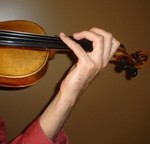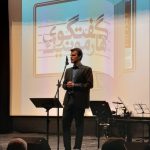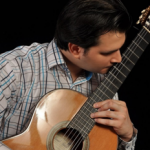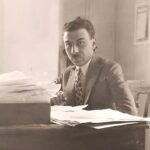
Lecture 3 & 4: Exploring Mozart’s Haydn Quartets
The collaboration between Mozart and Haydn blossomed during the late 18th century in Vienna, a city that served as the epicenter of musical innovation. Amidst this vibrant cultural milieu, the two composers developed a profound friendship that extended beyond mere professional admiration. This connection is reflected in the six string quartets dedicated by Mozart to Haydn, aptly known as the “Haydn Quartets.”
Historical Context
- Vienna’s Musical Landscape:
Vienna in the late 18th century was not only a cultural hub but also a city undergoing significant political and social changes. Emperor Joseph II, an enlightened monarch and a patron of the arts, sought to modernize and centralize the Habsburg Empire. His reforms touched every aspect of society, including the arts, and had a profound impact on Vienna’s musical culture.
- Joseph II’s Reforms:
Emperor Joseph II’s reign (1780-1790) witnessed a series of reforms aimed at fostering a more enlightened and accessible society. In the realm of music, Joseph II’s policies aimed to democratize access to the arts, encouraging public concerts and making music more accessible to a broader audience. This shift had a direct impact on the musical landscape of Vienna, creating a demand for more diverse and engaging forms of musical expression.
- Influence on Mozart and Haydn:
Joseph II’s support for public concerts and a broader cultural engagement directly influenced Mozart and Haydn, who were active figures in Vienna’s musical scene. The emergence of public concerts provided these composers with a platform to showcase their works to a wider audience, moving away from the exclusive patronage system that had characterized earlier eras. The Haydn Quartets, composed during this period, may be seen as a response to the changing cultural climate, with Mozart and Haydn embracing new opportunities afforded by Joseph II’s reforms.
- The String Quartet as a Public Art Form:
As public concerts gained popularity, the string quartet emerged as a versatile and intimate ensemble suitable for these new performance settings. The Haydn Quartets, including those dedicated to Haydn, became part of this evolving musical landscape. Composed for both public and private performances, they encapsulated the spirit of accessibility and intellectual engagement encouraged by Joseph II’s reforms.
- Collaborative Exchange and Dedication:
The collaborative spirit between Mozart and Haydn, evident in the dedication of the quartets, was fostered by an environment that encouraged artistic dialogue. Joseph II’s reforms, promoting a more inclusive cultural scene, created a space for composers to engage with each other’s work and contribute to the development of a shared musical language. The dedication of the quartets to Haydn may be seen not only as a gesture of personal admiration but also as a nod to the collaborative and interconnected nature of Vienna’s musical community under Joseph II.
In summary, the historical context surrounding Mozart’s Haydn Quartets is deeply intertwined with the reforms initiated by Emperor Joseph II. These reforms, aimed at democratizing access to the arts and fostering a more inclusive cultural environment, provided the backdrop against which Mozart and Haydn’s collaboration flourished. The Haydn Quartets, products of this transformative period, reflect not only the musical genius of their creators but also the evolving societal dynamics and cultural policies that shaped Vienna’s vibrant artistic landscape.
Musical Characteristics
- Structural Innovations
Mozart’s Haydn Quartets exhibit a remarkable fusion of classical forms and innovative structural elements. The thematic material is intricately developed within the confines of the sonata-allegro, minuet and trio, and rondo forms. The first violin often carries the principal thematic material, but Mozart masterfully distributes motifs and ideas among all instruments, creating a dialogue that showcases his evolving contrapuntal prowess.
- Contrapuntal Mastery:
In the spirit of his mentor Haydn, Mozart’s Haydn Quartets showcase a heightened contrapuntal complexity. The contrapuntal elements are not merely decorative but serve as integral components of the overall musical fabric. The interplay between voices is particularly evident in the “Hunt” Quartet (K. 458) and the “Dissonance” Quartet (K. 465), where Mozart skillfully weaves intricate contrapuntal textures, demonstrating a profound understanding of counterpoint.
- Expressive Depth:
The slow movements of Mozart’s Haydn Quartets are notable for their emotional depth and introspection. In the “Hunt” Quartet, the Adagio opens with a lyrical cello melody, which is then passed to the other instruments, creating a poignant and expressive dialogue. Similarly, the “Dissonance” Quartet’s Andante movement features a striking chromaticism, pushing the boundaries of tonality and expressing a profound emotional depth that goes beyond the conventional norms of the time.
- The “Hunt” Quartet (K. 458):
The nickname “Hunt” was later attached to this quartet due to its lively and playful character reminiscent of a hunting horn call. The first movement, with its galloping rhythms and hunting-style figures, exudes a sense of outdoor energy. The Menuetto is replaced with a “Trio” section that further evokes the spirit of a hunt, featuring hunting horn imitations and rustic charm.
- The “Dissonance” Quartet (K. 465):
The moniker “Dissonance” was not given by Mozart but aptly captures the striking dissonances in the quartet’s slow introduction. The Adagio introduction is characterized by unusual suspensions and dissonant chords, creating a sense of tension and surprise. As the movement progresses, Mozart resolves these dissonances, leading into a brilliant Allegro that showcases the composer’s ability to balance innovation with classical clarity.
- Enduring Legacy:
The Hunt and Dissonance quartets, among Mozart’s Haydn Quartets, exemplify his ability to infuse classical forms with inventive and expressive content. The unique characteristics of these quartets not only reflect Mozart’s evolving style but also contribute to their enduring popularity, ensuring their place as cornerstones of the chamber music repertoire.
In conclusion, Mozart’s Haydn Quartets, exemplified by the “Hunt” and “Dissonance” quartets, reveal a fusion of structural innovation, contrapuntal mastery, and expressive depth. The unique characteristics of each quartet contribute to the enduring legacy of these works, showcasing Mozart’s brilliance and his profound engagement with the evolving musical landscape of the Classical era.
Enduring Legacy
Mozart’s Haydn Quartets, while initially dedicated to Haydn, have secured their place in the pantheon of chamber music. Their enduring legacy lies not only in their historical significance but also in their continued relevance and appeal to contemporary audiences. The quartets remain a staple in the repertoire of string ensembles worldwide, a testament to their timeless beauty and the enduring genius of their composers.
Mozart’s Haydn Quartets stand as a remarkable testament to the symbiotic relationship between two of the greatest composers of the Classical era. These works embody a harmonious fusion of creative brilliance, technical mastery, and emotional depth. As we continue to explore and celebrate the rich tapestry of chamber music, the Haydn Quartets remain a shining example of the collaborative spirit that defines classical composition and performance.
* Prepared from six lectures on string quartets of W.A. Mozart were presented by author Autumn 2023, Bidar School of Art and Humanities. (This is not a complete rendition of the lectures. It contains short notes and guidelines about the main ideas)








